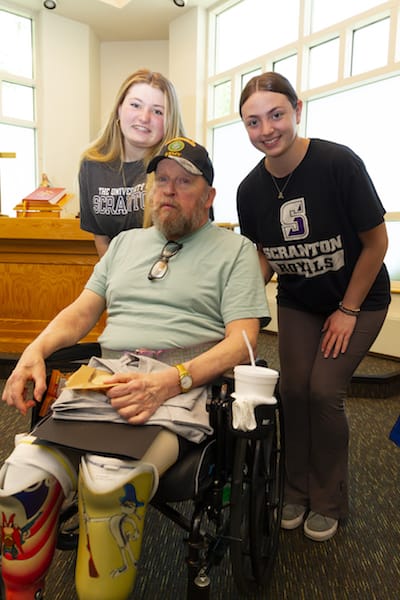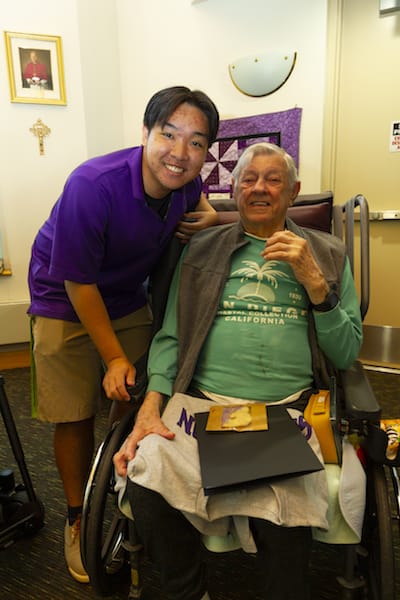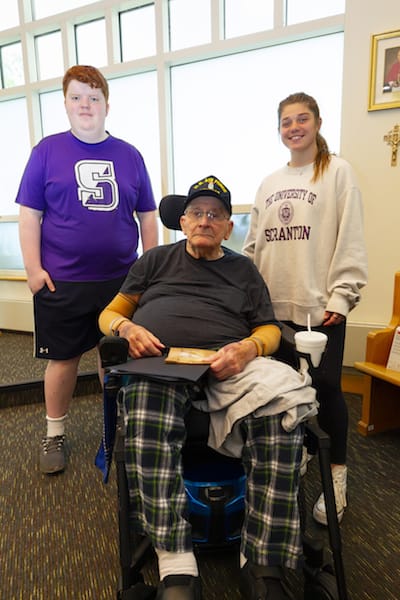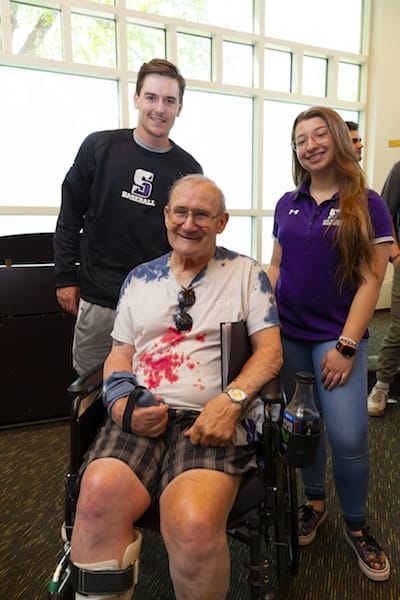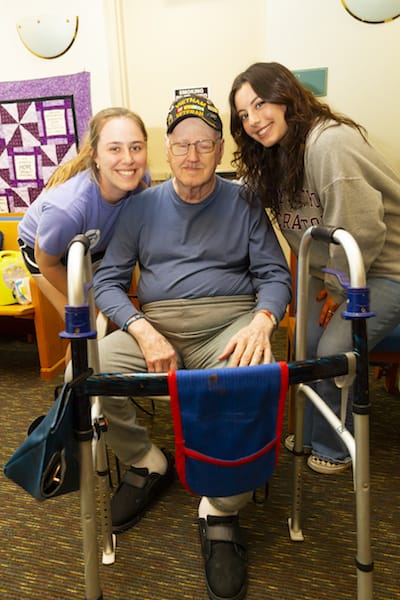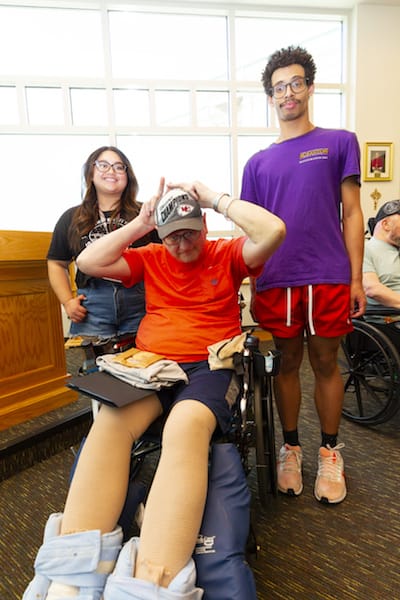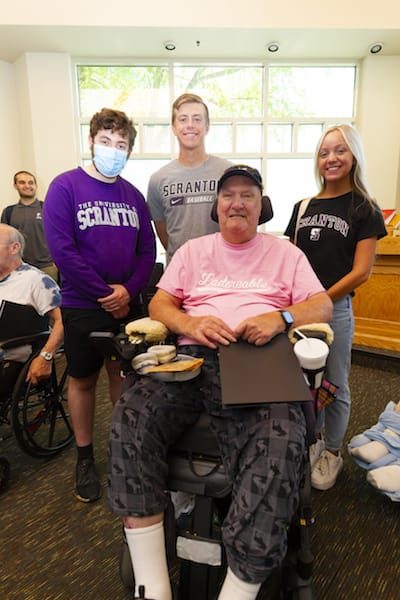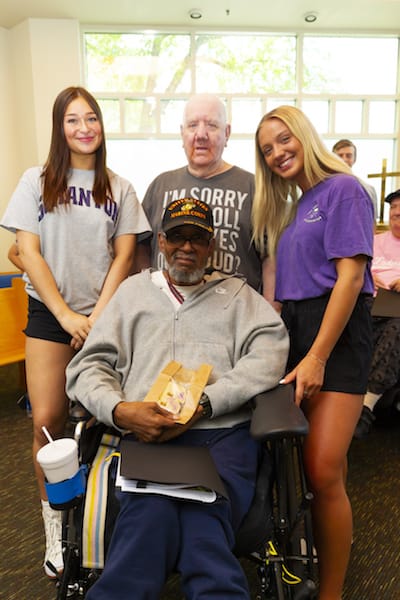Community-Based Learning Puts Jesuit Values into Action
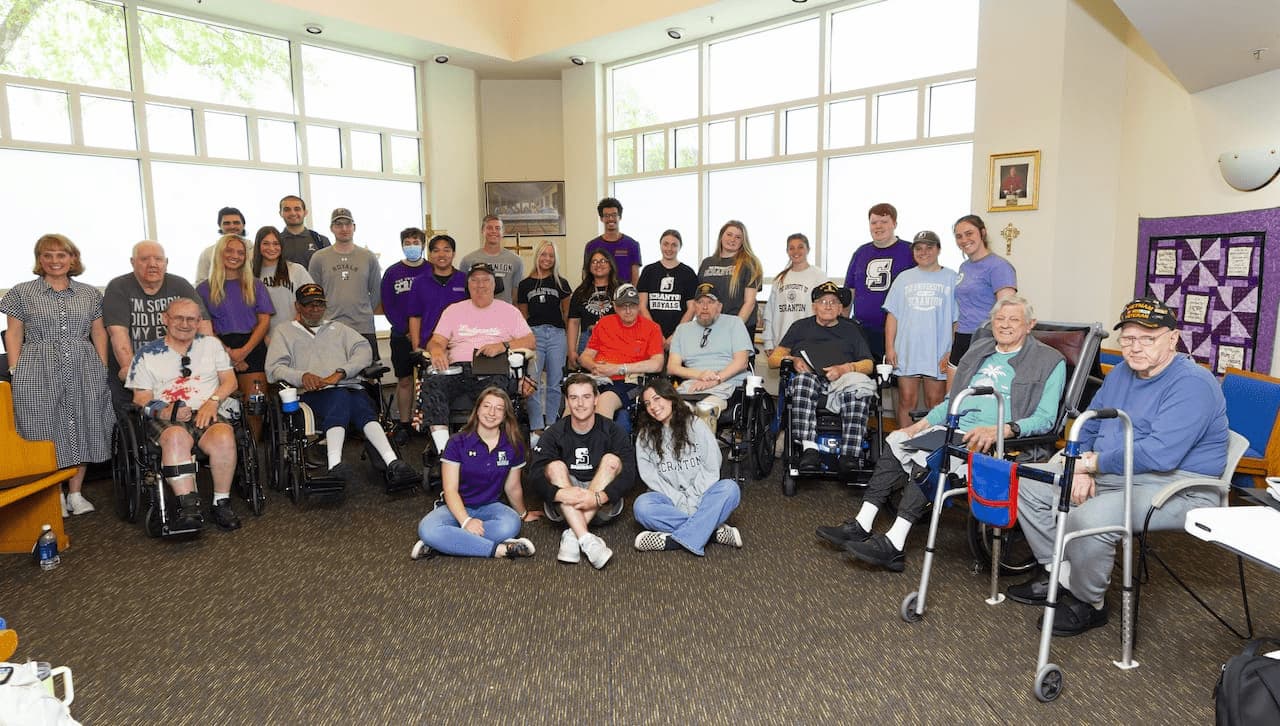
This academic year, The University of Scranton continued to pair students with local organizations via its Community-Based Learning (CBL) academic initiative. CBL projects took place in all three of the University’s colleges: the Kania School of Management, the College of Arts and Sciences and the Panuska College of Professional Studies, which requires CBL projects for students in all of the its majors.
CBL projects are designed with the specific intent of providing students with the opportunity to engage in experiential, real-world learning, while also serving community needs and gaining a global perspective and understanding through integration of theory with practice, direct engagement with community members and personal and critical academic reflection.
Through their individual projects, the students come to understand common challenges facing humanity, identify systemic problems, and develop a commitment to their communities, especially “people who live and work in poverty, illness, inequality, hopelessness and other social disparities.”
“Community-based learning represents Jesuit values in action and is a best practice of Ignatian pedagogy,” said Debra Fetherman, associate professor health and human performance and faculty coordinator for the Office of Community-Based Learning. “CBL creates an exceptional teaching and learning experience where all involved – faculty, students and community members – embody being men and women for and with others.”
Of the dozens of CBL projects that took place in courses this academic year, seven were completed by faculty who were supported by the CBL faculty fund initiative, which provides small grants to support faculty-led CBL activities.
Gino Merli Veterans’ Stories was among these seven CBL projects. Students in the Media Writing course taught by Department of Communication and Media faculty member Kimberly Pavlick, Ph.D., spent the spring semester interacting with veterans at Scranton’s Gino J. Merli Veterans Center in order to tell their stories via written profiles and videos to be shared with the families and the public.
The project was done in partnership with Scranton Tomorrow, one of several community partners Dr. Pavlick has worked with on various CBL projects in recent years. In her view, students get a tremendous amount of value from the experience.
“It’s real-world experience for the student, but it also fulfills the University’s mission,” Pavlick said. “Our job is to get students off campus and out in the community to interact with people. So, anything you can do to help them develop their interpersonal skills is going to be extremely beneficial to them. And it just makes them better humans.”
Junior business communication major Ryan Sophabmixay worked with World War II Marine veteran Stanley Frable for his project.
“He was a joy to talk to,” Sophabmixay said. “He was very happy to share his stories with someone. He also gave me a lot of good advice, and expressed how blessed he was to serve in the Marine Corps. It was an honor to preserve his story for his family for generations to come.”
Beyond that, it was great to get some real-world communication experience, Sophabmixay added.
“Community-based learning gives you the chance to actually do the type of work we’ve been learning about in the classroom,” he said. “It shows how much work you have to put in to be a professional.”
Sophomore advertising major Claire Koscinski had a similarly gratifying experience working with Army veteran Mike Brennan.
“It was really eye-opening hearing Mike’s stories and of course writing about his experience,” Koscinski said. “It was cool to see how he lit up when we interviewed him. He was really excited to tell his story. And for me it was very gratifying writing his story, and also a little nerve wracking, because I wanted to make sure his family liked it. I’m proud of it, and I’m excited for him and his family to have it, because it’s something they can have forever. … This is one of my favorite classes I’ve taken so far, because it was real-life learning and I learned so much from it.”
Dr. Pavlick said a recent ceremony held at the Merli Center to celebrate the project’s conclusion once again illustrated to her the enduring importance of CBL.
“I’m very big on taking mental snapshots,” she said. “I watched the students and their faces, and I heard the laughter, and that connection they made with those veterans, and it was just unbelievable to witness. It was beautiful – and the beauty and the care and the compassion that the students have shown is mind blowing to me. If we’re trying to raise men and women for others, this is how we do it.”
The faculty initiatives fund program has existed for several years, but in 2022-2023 it was utilized for the largest number of projects to date. “The use of these funds and the increase in these types of projects is a testament to the growth and expansion of how we connect academic courses, programs and initiatives with community-identified needs in ways that help to make positive change in our local area,” said Julie Schumacher Cohen, Assistant Vice President of Community Engagement and Government Affairs and CBL Board Chair
Below are highlights of the some of the other CBL projects mounted during Fall 2022 and Spring 2023 semesters with CBL faculty initiative support funds:
Recovery Bank Voices Project: In fall 2022, students of Department of Psychology faculty member Jessica Nolan, Ph.D., professor of psychology, conducted interviews with individuals in recovery from drug and/or alcohol addiction, then used the information to create a mini-memoir and brief oral presentation reflecting the key elements of their subjects’ stories. This project was a collaboration with the Recovery Bank located in downtown Scranton.
Earth Week 2023, Mat Makers Workshop: Weinberg Memorial Library faculty chair Sheli Pratt-McHugh worked with community member Leah Rudolph to conduct a workshop open to University students, faculty and staff and the public to learn how to make plarn (plastic yarn) and crochet it into sleeping mats for Scranton’s homeless population. Participants also learned about sustainability, practical applications, and steps everyone can take to reuse materials within the community. The mats were donated to the Keystone Mission.
Updating Businesses Map for Downtown Scranton: This project, conducted in partnership with local community and economic development non-profit Scranton Tomorrow, engaged students in the Principles of Macroeconomics honors course, taught by Aram Balagyozyan, Ph.D., associate professor of Economics, Finance, and International Business, to update the map of businesses in downtown Scranton. Students spent time exploring downtown Scranton and interacting with small businesses to update business locations on the map, which is utilized by the University and the broader community.
Individualized Exercise Training for Senior Adults: In partnership with the Jewish Community Center of Scranton, students of Michael Landram, Ph.D., associate professor health and human performance, got the chance to interact one-on-one with senior adults to provide individualized exercise training as a way to prepare for their future professional lives as clinicians. The students gained personal insights into the myriad difficulties faced by seniors, and the ways in which they can intervene on their behalf while the older adults, often at risk of isolation or failing health, benefited from the training exercises, including the use of particular exercise bands.


